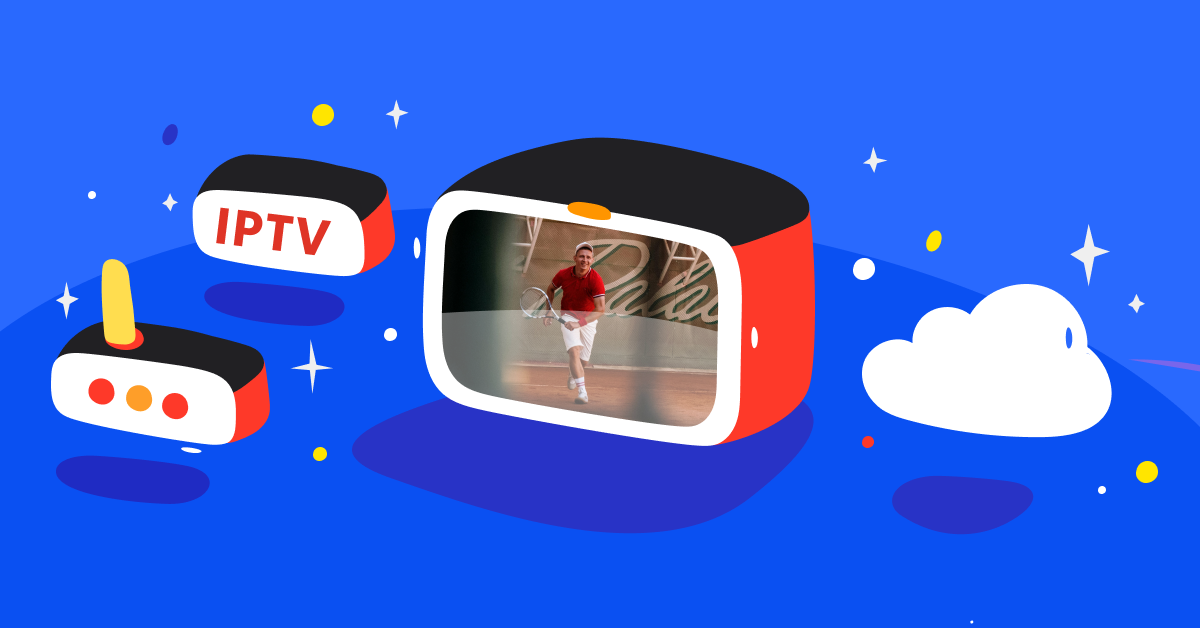The television landscape has undergone a dramatic transformation in recent years. IPTV, or Internet Protocol television, has emerged as a groundbreaking way to consume digital content. This technology delivers television programming through internet networks instead of traditional cable or satellite systems, differing significantly from traditional cable TV, which has been regulated differently and is now facing an outdated regulatory framework due to technological convergence.
IPTV offers viewers unparalleled flexibility and control over their viewing experience. Users can access a vast array of on-demand content, live broadcasts, and interactive features. The rise of high-speed internet connections has fueled IPTV’s growing popularity. Consumers are increasingly ditching cable subscriptions in favor of more cost-effective and customizable streaming options. However, the importance of a reliable internet service provider cannot be overstated, as slow speeds or frequent outages can negatively impact the IPTV viewing experience. IPTV platforms provide personalized recommendations, time-shifting capabilities, and multi-device accessibility. This shift represents a fundamental change in how we consume entertainment. As the digital age progresses, IPTV is poised to become the dominant form of television delivery.
This article will investigate the ins and outs of IPTV technology and its impact on the media landscape.
What is IPTV?
IPTV stands for Internet Protocol Television. IPTV is a system for delivering television content over Internet Protocol (I.P.) networks. Unlike traditional broadcast, cable, or satellite T.V., IPTV uses the internet to stream video content to viewers.
This technology allows users to stream media content directly to their devices. IPTV service providers transmit programming over managed I.P. networks, ensuring quality and reliability. Unlike traditional cable T.V., IPTV offers more flexibility and interactive features. Viewers can access live T.V., on-demand content, and interactive applications through their internet connection. Smart TVs, set-top boxes, and mobile devices can display IPTV channels. Smart TVs are an accessible alternative for watching IPTV without additional hardware.
The global IPTV market continues to grow as more consumers seek personalized viewing experiences. Popular IPTV services often include video-on-demand (VOD) options and customizable channel packages. Service providers utilize fiber optic cables to deliver high-quality digital television signals. Network security measures protect IPTV systems from unauthorized access and content piracy.
The technology behind IPTV allows for seamless integration with other internet-based services. As internet speeds increase, IPTV is becoming a viable alternative to traditional cable and satellite television.
Hybrid IPTV
Hybrid IPTV represents a fusion of conventional television and internet-based streaming services. This innovative approach combines the best of both worlds for viewers. Hybrid IPTV can integrate satellite TV for enhanced content delivery, leveraging satellite technology to support high-speed content delivery in conjunction with Internet Protocol television. Traditional T.V. channels are delivered through standard broadcast methods, while on-demand content arrives via internet protocol.
Users can access live programming, catch-up T.V., and streaming platforms through a single interface. The hybrid model offers flexibility and a diverse range of content options. Viewers enjoy seamless switching between linear broadcasts and online streaming services. This convergence improves the overall viewing experience by providing more choices and convenience.
Hybrid IPTV addresses limitations of pure IPTV systems, such as bandwidth constraints and possible quality issues. The technology utilizes existing infrastructure while incorporating modern streaming capabilities. As a result, users benefit from a comprehensive entertainment solution that caters to various preferences and viewing habits.
The Historical Development of IPTV
Understanding IPTV’s evolution provides an important context for its current capabilities and future promise.

Early Challenges and Technological Advancements
In the early 1990s, digital T.V. signals required massive bandwidth. This hindered the development of video-on-demand (VOD) services. Technological breakthroughs soon changed the landscape. Motion-compensated DCT compression reduced bandwidth needs significantly. Digital T.V. signals shrank from 200Mbit/s to just 2Mbit/s.
ADSL Technology and the Birth of IPTV
ADSL technology improved copper wire bandwidth from 0.1Mbit/s to 2Mbit/s. The term “IPTV” first appeared in 1995 with Precept Software’s IP/TV product. This innovation paved the way for audio and video traffic over I.P. networks. U.S. West launched TeleChoice in 1998, marking the first U.S. IPTV service.
Early IPTV Services and Protocols
Kingston Interactive Television (KIT) debuted in 1999, influencing UK IPTV regulations. RTP and RTCP protocols became essential for real-time streaming. VDSL technology boosted early IPTV service delivery. These advancements set the stage for rapid growth in the industry.
High-Definition IPTV and Global Expansion
SureWest Communications offered the first high-definition IPTV channels in North America by 2005. Global expansion followed with services launching in Australia and Sweden. TPG and Bredbandsbolaget led the charge in their respective countries. IPTV providers utilized fiber optic cables and managed networks for superior service.
IPTV’s Rise to Prominence
By 2015, pay IPTV users in Western Europe surpassed pay satellite T.V. subscribers. Smart T.V.s and set-top boxes became commonplace in homes. IPTV service providers offered extensive VOD content and international channels. The technology’s flexibility and quality attracted viewers worldwide, cementing its place in modern entertainment.
How IPTV Works
The IPTV system relies on a robust network infrastructure for seamless streaming.

Network Architecture
IPTV requires a complex network setup to function effectively. Internet service providers play a crucial role in this system. A reliable internet service provider is essential to maintain the necessary infrastructure for high-definition streaming and to avoid outages or slow speeds that could negatively impact the viewing experience. Fiber optic cables often form the backbone of IPTV networks.
Content Delivery
Content providers supply programming to IPTV service providers. Live TV channels play a crucial role in IPTV distribution, especially in commercial applications like airports and hotels, and in hybrid IPTV network architectures that utilize satellite technology for enhanced delivery. These providers then encode and compress the video content. The compressed data travels through the network to reach end-users. I.P. multicasting allows simultaneous delivery to multiple viewers.
User Interface
Viewers access IPTV through a user-friendly interface. This interface may be on a smart T.V. or a set-top box. Apple T.V. is an example of a popular IPTV-compatible device. The interface allows users to browse and select their desired content.
Streaming Process
When a user selects content, the IPTV system initiates a stream. The video data travels from the provider’s servers to the user’s device. This process happens in real time for live IPTV broadcasts. For on-demand content, the system retrieves stored video files.
Additional Features
IPTV offers various additional features beyond basic video streaming. Many services include parental controls for content restriction. Multiple language options are often available for international audiences. Some providers offer new services like interactive gaming or shopping.
Global Reach
IPTV has gained popularity worldwide, including in regions like the Middle East and North Africa. The technology allows for content delivery across the public internet. This global reach has led to the rise of streaming services like HBO Max.
Use Cases of Internet Protocol TV
IPTV offers numerous applications across various sectors. Let’s investigate the key use cases of this technology.
Home Entertainment
IPTV streaming services provide a wide range of content to viewers. Users can access movies, TV shows, and live broadcasts on their TV screens. IPTV set-top boxes connect to internet service providers for seamless streaming. This technology allows viewers to enjoy on-demand content and personalized recommendations.
Business Communications
Companies utilize IPTV for internal communications and training purposes. Multicast streams enable efficient distribution of information to employees. IPTV systems can deliver video content to multiple locations at the same time. This technology promotes remote meetings and presentations across different offices.
Education and E-learning
Educational institutions utilize IPTV for distance learning programs. Students can access lectures and educational content from anywhere. IPTV platforms support interactive features for improved learning experiences. Multiple language options make educational content accessible to diverse audiences.
Hospitality Industry
Hotels and resorts use IPTV to improve guest experiences. Customized welcome messages and local information can be displayed on room T.V.s. IPTV systems allow guests to access hotel services through their T.V. screens. This technology provides a modern and convenient amenity for travelers.
Healthcare
Hospitals and medical facilities utilize IPTV for patient education and entertainment. Informational videos about treatments and procedures can be streamed to patient rooms. IPTV systems can also provide relaxation content to enhance patient well-being. Medical staff can access training videos and conferences through IPTV networks.
Public Spaces
IPTV is used in airports, train stations, and other public areas. Real-time information and announcements can be displayed on digital screens. This technology enables efficient communication of schedules and emergency alerts. IPTV systems in public spaces often require additional network infrastructures.
The Popular IPTV Providers
The IPTV market offers numerous options for streaming enthusiasts. Some notable IPTV providers include:
1. Hulu + Live TV
2. YouTube T.V.
3. Sling T.V.
4. FuboTV
5. AT&T TV Now
6. Philo
7. PlayStation Vue (discontinued but still influential)
8. Pluto TV
9. Roku Channel
10. Amazon Prime Video Channels
11. Apple TV+
12. Peacock T.V.
These providers offer a range of subscription-based services. Content delivery methods vary among platforms. Each service caters to different entertainment preferences. Viewers can choose based on channel lineups and pricing options. Some providers focus on live T.V., while others emphasize on-demand content.
The competitive landscape continues to shift. New entrants and established players shape the IPTV market. Consumers benefit from the diverse array of choices available. Research and comparison are essential for selecting the right provider.
Benefits of IPTV
IPTV offers numerous advantages for viewers seeking an enhanced television experience. From convenience to cost-effectiveness, this innovative technology transforms how we consume and enjoy media content. Let’s explore the core of them:
Access to a Wide Variety of Content
IPTV transforms the way viewers access entertainment. This technology offers thousands of live TV channels, movies, and series. The vast selection covers diverse genres, including sports, news, entertainment, and international content. Viewers can investigate a global array of programming, expanding their cultural horizons. Regular updates to channel offerings ensure fresh content is always available.
IPTV caters to flexible viewing preferences for various audiences. Sports enthusiasts can enjoy live matches from around the world. News junkies stay informed with real-time updates from multiple sources. Movie buffs have access to an extensive library of films. TV series fans can investigate both classic and contemporary shows.
The platform’s diversity allows households to accommodate different tastes. Parents can find educational content for children. Teenagers can access youth-oriented programming. Adults can enjoy mature content suited to their interests. This variety eliminates the need for multiple subscriptions or services. IPTV provides a one-stop solution for all entertainment needs.
International viewers benefit from access to content from their home countries. This feature is particularly valuable for ex-pats and language learners. The global nature of IPTV breaks down geographical barriers in content consumption. It fosters cultural exchange and understanding through shared media experiences.
On-Demand Viewing
IPTV’s on-demand feature transforms the viewing experience. Users can watch content at any time, free from traditional broadcast schedules. This flexibility accommodates busy lifestyles and varying routines. Viewers no longer need to rush home for their favorite shows. They can enjoy content at their convenience, whether early morning or late night.
The on-demand option improves user control over the viewing experience. Pause, rewind, and fast-forward functions allow for personalized viewing. Users can take breaks without missing content or replay favorite scenes. This control extends to the pace of consumption. Viewers can watch episodes back-to-back or space them out as desired.
On-demand viewing supports the popular trend of binge-watching. Entire seasons of T.V. shows are available at once. This feature satisfies the desire for immediate gratification in content consumption. It also allows viewers to stay current with popular series without waiting for weekly releases.
The reduced reliance on traditional broadcast times benefits various groups. Shift workers can enjoy prime-time shows outside standard hours. Parents can watch adult content after children’s bedtimes. Students can fit entertainment around study schedules. This flexibility promotes a better work-life-entertainment balance for all users.
High-Quality Streaming
IPTV delivers superior streaming quality to elevate the viewing experience. Many providers offer HD and 4K streaming options. These high-resolution formats ensure crisp, clear visuals. Viewers can enjoy their favorite content with cinema-like picture quality. The improved resolution is particularly noticeable on large screens and modern T.V.s.
The streaming quality remains consistent, minimizing interruptions. Advanced streaming technologies reduce buffering and lag during playback. This consistency allows for immersive viewing experiences without frustrating pauses. Viewers can fully engage with the content without technical distractions.
IPTV platforms adapt streaming quality based on internet speed. This adaptive streaming ensures optimal performance across various connections. Users with high-speed internet can enjoy maximum quality. Those with slower connections still receive a smooth, though lower-resolution, stream. This adaptability makes IPTV accessible to a wide range of users.
Audio quality is not overlooked in IPTV streaming. Many services offer surround sound options. This feature elevates the overall viewing experience, especially for movies and live events. The combination of high-quality video and audio creates a cinematic experience at home.
Multi-Device Compatibility
IPTV’s multi-device compatibility offers unparalleled viewing flexibility. The service works seamlessly across smart TVs, computers, tablets, and smartphones. This versatility allows users to access their favorite content on any device. The viewing experience remains consistent regardless of the chosen platform.
The multi-device feature supports on-the-go content consumption. Commuters can watch shows on their smartphones during travel. Travelers can access familiar programming on laptops in hotel rooms. This portability ensures entertainment is always available, regardless of location.
IPTV improves user convenience through device-switching capabilities. Viewers can start a show on their T.V. and continue on a tablet. This seamless transition accommodates changing environments or preferences. It allows for uninterrupted viewing experiences throughout the day.
The platform supports multiple users who are accessing different devices at the same time. Family members can watch separate programs on various devices. This feature eliminates conflicts over shared T.V. time. It promotes harmonious household entertainment consumption.
Cost-Effective Alternative to Cable
IPTV presents a cost-effective alternative to traditional cable or satellite services. Subscriptions are typically more affordable, offering extensive content at lower prices. This pricing structure reduces overall entertainment costs for consumers. Households can access a wide range of programming without breaking the bank.
The service eliminates hidden fees associated with traditional providers. There are no equipment rental charges or installation costs. Users avoid unexpected price hikes common with cable contracts. This transparency in pricing allows for better budget planning.
IPTV encourages subscription flexibility through various package options. Users can choose plans that align with their viewing habits and preferences. This customization ensures consumers only pay for the content they want. It eliminates the need for expensive, all-inclusive packages with unused channels.
The cost-effectiveness extends to multi-room viewing. Traditional services often charge extra for additional T.V.s. IPTV allows multiple devices to access the service without additional fees. This feature provides significant savings for households with multiple viewing areas.
Future of IPTV Technology
IPTV technology continues to evolve, expanding its capabilities beyond traditional uses. Service providers are developing improved interactive portals and multimedia content. These advancements offer users more immersive experiences on their T.V. screens. The future of IPTV promises exciting possibilities for entertainment and information delivery.

Mobile accessibility for IPTV services is growing rapidly. Users can now access real-time news and entertainment on their smartphones and tablets. This trend aligns with the increasing demand for on-the-go streaming content. IPTV providers are focusing on optimizing their platforms for various mobile devices.
Various sectors are seeking scalable IPTV solutions to meet their specific needs. Educational institutions, healthcare facilities, and corporate organizations are adopting IPTV technology. These sectors utilize IPTV for training, communication, and information dissemination. The versatility of IPTV makes it an attractive option for diverse applications.
Security measures and regulatory compliance remain crucial aspects of IPTV’s future. Service providers are continuously improving encryption and authentication protocols. These improvements protect user data and prevent unauthorized access to streaming content. IPTV set-top boxes are also receiving updates to ensure better security and performance. As technology advances, compliance with international regulations will be essential for global expansion.
Try Castr’s Video CDN for IPTV
Becoming an IPTV provider like Netflix is now within reach. Castr’s robust video CDN for IPTV offers an all-in-one streaming solution. This platform enables seamless video delivery to audiences across various devices and locations.
IPTV work involves distributing television content over Internet Protocol networks. Castr’s video CDN ensures efficient content delivery, minimizing buffering and latency issues. The platform supports high-quality streaming, which is essential for attracting and retaining viewers in the competitive IPTV market.
Aspiring IPTV providers can utilize Castr’s comprehensive features to launch their services. The platform’s scalability accommodates growing subscriber bases and expanding content libraries. With Castr’s video CDN, IPTV providers can focus on content curation and user experience, while the technical aspects of video delivery are handled efficiently.






